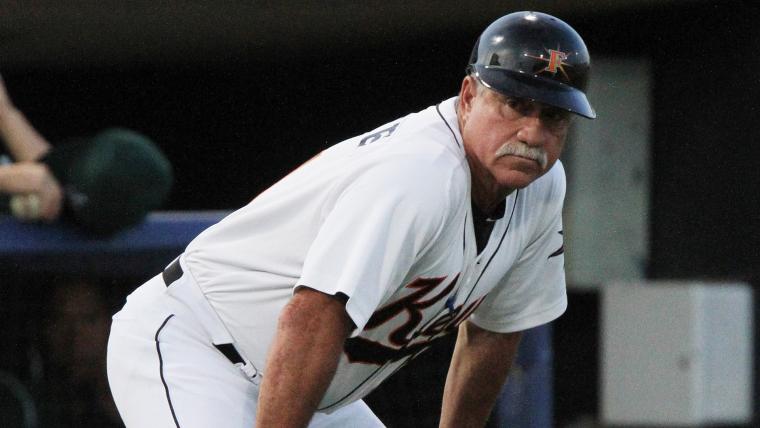This is a play that has never occurred in a major league game, but allegedly did occur in a minor league spring training game in 1986.
It is a triple play in which no fielder touches the ball.
Here's how it happened, according to one of the players in that game: First and second, no outs. Hit and run play is called (back when hit and run was a thing), and both runners take off, neither of whom is watching the ball.
The batter hits an infield pop and is immediately called out under the infield fly rule. One out.
The runner on second, not knowing the ball was hit, slides into third. The coach screams at him to get up and go back to second. He tries to do so, but...
The runner on first, who apparently thought the ball would carry to the outfield and drop safely, rounded second and sped to third - and passed the lead runner who was returning to second. The trailing runner is therefore called out. Two outs.
And... before the lead runner had safely returned to second, the descending pop fly hit him! So he too is out. A triple play in which no fielder touched the ball.
Did it actually happen? Who knows? But even the theoretical possibility is fun to think about.

 www.sportingnews.com
www.sportingnews.com
It is a triple play in which no fielder touches the ball.
Here's how it happened, according to one of the players in that game: First and second, no outs. Hit and run play is called (back when hit and run was a thing), and both runners take off, neither of whom is watching the ball.
The batter hits an infield pop and is immediately called out under the infield fly rule. One out.
The runner on second, not knowing the ball was hit, slides into third. The coach screams at him to get up and go back to second. He tries to do so, but...
The runner on first, who apparently thought the ball would carry to the outfield and drop safely, rounded second and sped to third - and passed the lead runner who was returning to second. The trailing runner is therefore called out. Two outs.
And... before the lead runner had safely returned to second, the descending pop fly hit him! So he too is out. A triple play in which no fielder touched the ball.
Did it actually happen? Who knows? But even the theoretical possibility is fun to think about.

That time a team turned a triple play without touching the ball | Sporting News
It actually happened in a professional baseball game.

